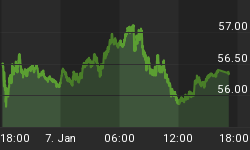Today marks the 100th anniversary of the passage of the Federal Reserve Act. A law created in a time of an earlier TMT bubble, The Money Trust. The Money Trust referred to numerous trusts that concealed significant corporate and economic control residing with a few businessmen. The chair of the House Committee on Banking and Currency, Rep. Pujo, held a committee that concluded unanimously, that a small community of influential financial leaders had gained control of major manufacturing, transportation, mining, telecommunications, and financial markets of the United States through seven banks and trust companies. This group was also behind the Federal Reserve Act passed in 1913. To get a sense of the scale of The Money Trust, J.P. Morgan and his partner boasted to have 746 directorships in 146 corporations representing about $25 billion, when the total banking credit of the country was $23 billion.
Management of the money supply and system of money creation has been a hotly contested area since the revolution. The US was founded on removing that sovereign money power from the crown. The Constitution gave Congress the responsibility to manage it. In times of crisis, there have always been private groups seeking this authority. They insisted they could do a better job than the government, and when in power, tended to abuse this authority creating unfair structural advantages.
The panic of 1907 provided such the crisis for this group to move in. It was called "The Knickerbocker Crisis" because one of the largest trust companies, The Knickerbocker Trust Company, was trying to corner the copper market. This does not sound like an activity a trust company should be engaged in. In this failed attempt the copper price dropped, and the National Bank of Commerce would no longer accept checks from Knickerbocker; a run on it ensued. Until 1906, trust companies had no reserve requirement, enabling speculation. Banks would not honor their deposits, although some suggest they could have. This crisis began the push for a national central bank to be a lender of last resort.
Numerous presidents have had to grapple with the constraints and distortions of the banking systems of their time. Here are some of their observations:
Teddy Roosevelt:
"The issue of currency is fundamentally a government function and the system should have basic principles of soundness and elasticity. The control should be lodged with the government and should be protected from domination and manipulation of Wall Street."
Woodrow Wilson:
"We have restricted credit, we have restricted opportunity, we have controlled development, and we have come to be one of the worst ruled, one of the most completely controlled and dominated Governments in the civilized world no longer a Government by free opinion, no longer a Government by conviction and the vote of the majority, but a Government by the opinion and duress of a small group of dominant men."
James Garfield:
"Whoever controls the volume of money in any country is absolute master of all industry and commerce...and when you realize that the entire system is very easily controlled, on way or another, by a few powerful men at the top, you will not have to be told how periods of inflation and depression originate."

The above symbol is a controversial one, and has interesting duality. Found on the back of the dollar bill, one wonders what it represents. Does it represent the Eye of Providence, watching over America? Does it represent the Eye of Horus, the divine royal power, with knowledge concentrated by few elites who are "fit to rule?" Is this best symbol for a republic based on a level playing field and equal rights? Versions of this symbol are popping up all over society and popular culture, and should be called out.
It's no accident that the top "Too Big To Fail" US banks control about 50% of deposits, that necessity inflation is eating up most of Americans' incomes, that most debt owners have been unfairly protected, and that there is around $58 trillion of current US debt. Only $10-$20 trillion of deposits back up the debt. It has not happened through a regulated free enterprise system, but rather a deceptive debt based system and an unaccountable central bank.
As Thomas Jefferson asked, "What is to hinder them from creating a perpetual debt?" 100 years later we are tired of the schemes, of the manipulations, and the half-truths. A central banking system consists of money, banking, accounting rules, and it is managed by people. It should exist for the benefit of society, not just for banks and their cronies. It shouldn't take another 100 years to figure this out. Since its inception, it only took chemist Frederick Soddy 20 years to design a better way. See more here.
















